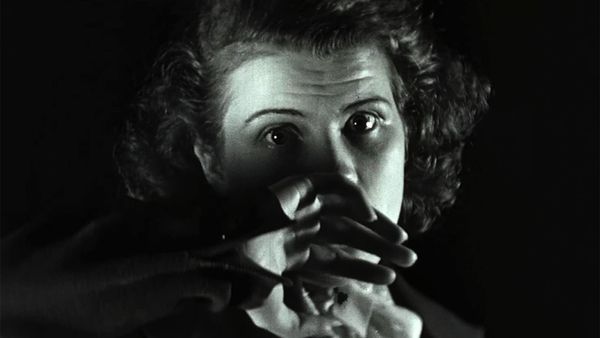Eye For Film >> Movies >> As The Earth Turns (2019) Film Review
As The Earth Turns
Reviewed by: Jennie Kermode

Shot in 1938, finished in 2019, Richard Lyford's As The Earth Turns is a standout piece of science fiction from the Silent Age. Lyford was just 20 years old when he made it, and although his confident work with the actors recalls his stage experience, much of what we see elsewhere is sheer invention. It may not look polished - indeed, producer/composer Edmund Hartman, who pieced it back together after it was found by one of Lyford's descendants - elected to refrain from restoring it further so that viewers could appraise the director's work in its raw form - but it is brilliant in what it manages to achieve with the simple tools of the time.
The late Thirties were a pivotal time in the development of cinema. Gone With The Wind was shot at the same time - not just a talkie, but in colour - and the two seem to come from different worlds. Whilst As The Earth Turns lacked the big studio budget, however, it's far more creative. If the model work looks shaky, bear in mind what audiences at the time were used to. Some of the cinematographic techniques it employs to dazzle the audience and develop a sense of the uncanny are impressive even by today's standards. Many people watch films from this era to laugh at them, not appreciating the effort involved, but give it a chance and this one will actually grip you. For those with an interest in the history of special effects, it's compelling viewing.
The story follows Julie (Barbara Berger), a young reporter keen to get a break who is told to wait around at a government telegraph station where big news sometimes comes in. Inexperienced as she is, and unaccustomed to the art of waiting, she thinks she's been fobbed off. When she does get a whiff of a story, her editor literally throws it in the bin, and one can understand why. A message from a man claiming to be able to control the Earth's rotation, it reads like a crank story. But when clocks around the world are five minutes out at the end of July the 7th, things start to seem a little different.
There are several themes here that were popular at the time and would become more so: disquiet about war and fear for humanity's future; excitement about science but worry about what might happen if a maverick scientist crossed moral boundaries; and changing sexual politics. Whilst Julie is a liberated character insofar as she has a job and is ready to assert herself, all her opportunities are dependent on the approval of men, and there's a cookie cutter dashing hero on hand to save her when necessary. Even the entity behind the strange message - and the series of disasters which follow (everything from a train falling into a river, to the sea breaking through the Atlas mountains and flooding the Sahara) doesn't take her seriously at first and waits to have the opportunity to talk to a man. Berger's performance, however, is by far the most impressive in the film and very different in style from what one sees in older silent moves. It's a transitional turn, big enough to work without audible words but nuanced enough that one can imagine it working with them. Unfortunately this is the only known surviving work in which she appears.
As for that mysterious entity, he's played by Lyford himself, who bears a curious resemblance to David Bowie in some shots and evinces the same sense of alienation. Whilst he fits n with the tropes of the time, he's an ambiguous, troubled figure who makes it impossible to view the film through a simple moral lens. Hartman's soundtrack preserves this sense of uncertainty, not least in the ways that it crosses the boundary between two eras and helps us to connect with the story as if it were something that could happen today.
Foreshadowing science fiction classics of the Forties and Fifties - especially The Day The Earth Stood Still - this is a fascinating piece of work which genre fans won't want to miss.















